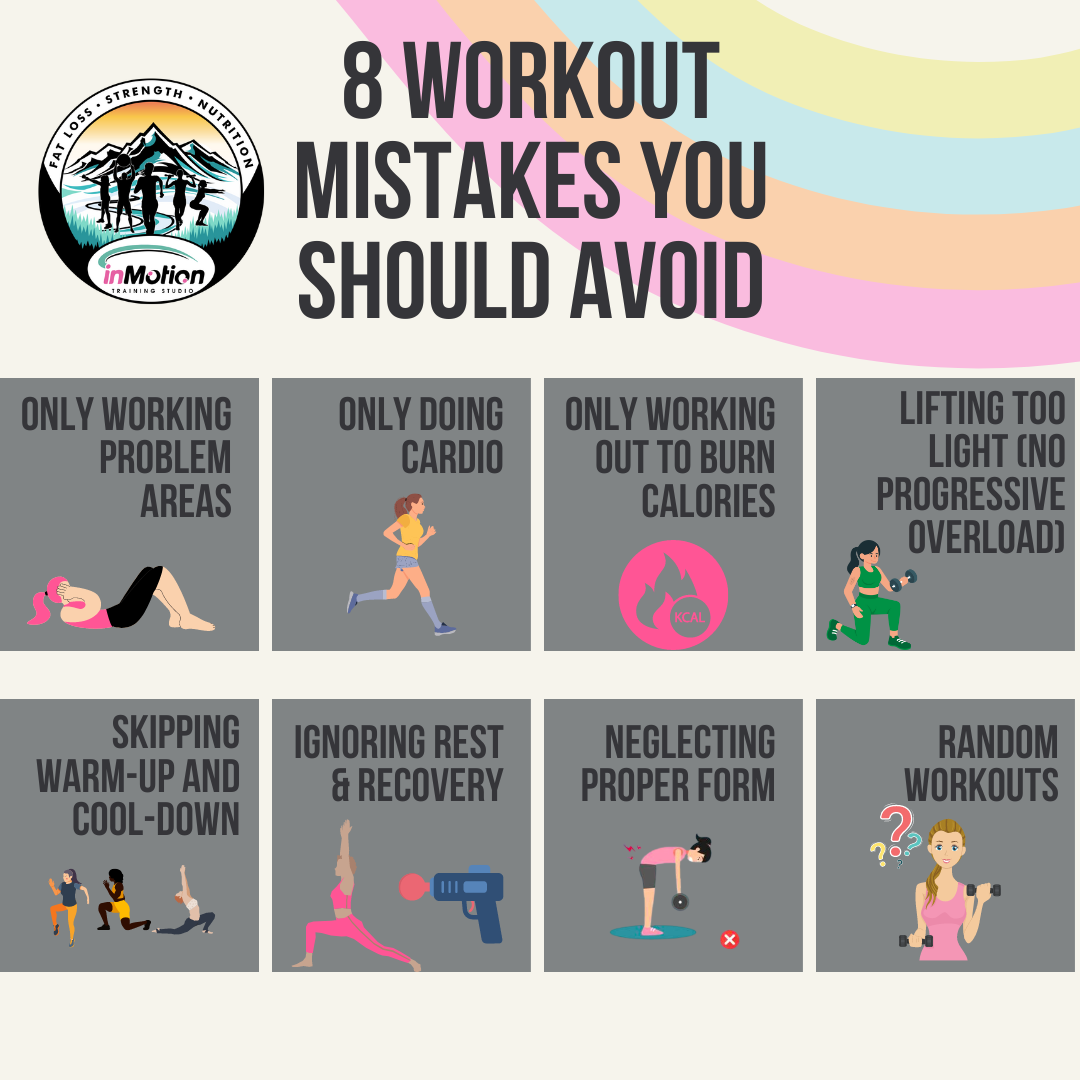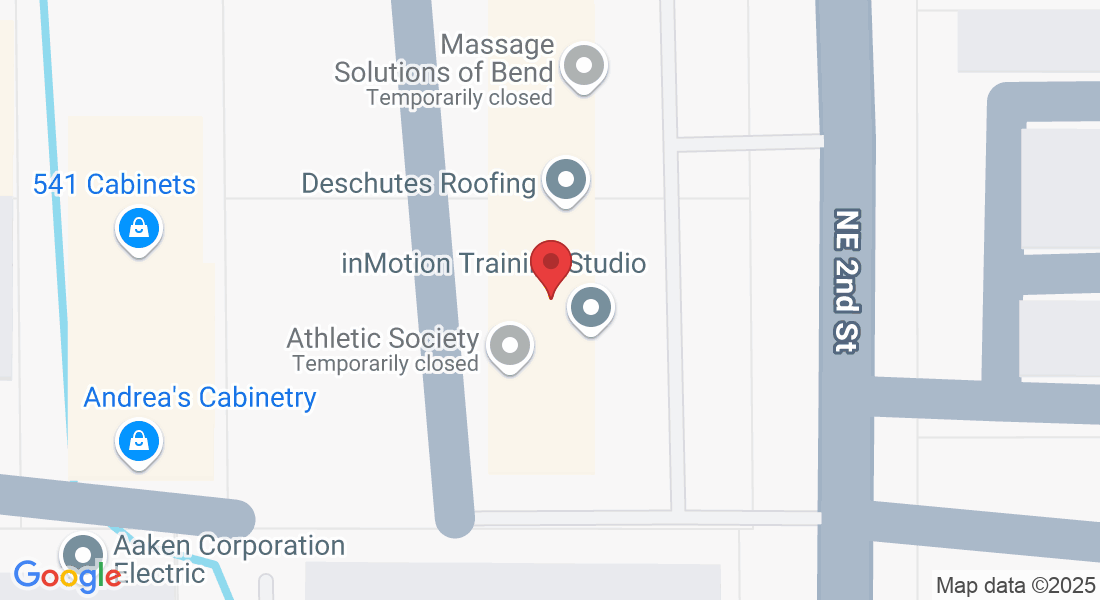blog | inmotion training studio

Random Workouts vs. Structured Workouts
RANDOM WORKOUTS vs. a STRUCTURED PROGRAM
UNPOPULAR TRUTH-Strength vs.Circuit, HIIT and Cardio for Fat Loss
If you are only doing classes and not a structured weight program you need to read this....

Workouts vs Programming
In the realm of fitness, the debate between random workouts and structured workouts is a perpetual one. Some argue for the excitement and spontaneity of random workouts, while others swear by the benefits of structured, planned routines. But when it comes to achieving long-term fitness goals, there's a strong case to be made for the latter.
Despite the terms being somewhat synonymous, there’s a big difference between someone going to the gym for a workout, and someone going there to train.
The biggest difference between training and working out is that one is structured and part of a bigger plan, and the other tends to be random (or at most loosely structured).
Essentially, workouts are singular bouts of exercise.
Whereas training is the productive sequencing of workouts towards a goal whether it be losing weight, getting stronger, feeling better or moving better.
While doing something is better than nothing, without an overarching structure or theme; random workouts will lead you to random results.
Workouts
A workout can be anything that you decide to do in the gym, at home, or wherever.
A workout is singular and doesn’t take into consideration the scope of the next, or the previous workout.
Typically random in nature, workouts with no overarching direction can leave you spinning on a hamster wheel as you try to achieve your goals.
A good example of a workout is showing up to an exercise class and completing whatever the instructor has planned that day.
Random workouts, characterized by their lack of structure and consistency, might seem appealing initially. They offer variety and can keep boredom at bay. However, without a clear plan in place, it's easy to fall into the trap of aimlessly jumping from one exercise to another without any real progression or purpose. It’s more than likely you’ve heard about “workouts of the day” or have seen a headline somewhere that goes something along the lines of, “Try this workout(Insert) Celebrity or Athlete followed for Movie/Show/Photo Shoot/Competition.”
There are certainly no shortages of workouts available in the world of fitness.
Businesses that thrive on individual workouts are booming! CrossFit, Orange Theory, Soul Cycle, Barry’s Bootcamp, and more, are on the rise.
Circuit training, HIIT, Crossfit, Barre, Yoga, Bootcamps, Group X classes, and cardio anything that is random ...doesn’t work half as well as strength training that is programmed and includes progressive overload.
Is it FUN heck yeah (well maybe not for some of you starting out:) does it work initially- for most- yes at least at first....Let me explain before you chop my head off and let me remind you I used to coach and train this way so I am by no means making fun of these or think they don't have a place.
Is it wrong to incorporate every once in a while?? No it can be used as your conditioning days or if you just want a mindless workout but its like only doing cardio for weight loss- you will hit a plateau and its not very joint friendly either.
Honestly, it’s just easier to program and make people feel like they “worked hard” because they’re sweaty and their quads burn from 100 jump squats and 50 burpees.
So here’s some truth on the matter for you…
⇨ Doing such high reps that you’re forced to use extremely lighter weights limits your ability to get stronger and place greater tension on the muscle. This is asking for stagnant results, because after a certain point, you adapt (quickly) and can’t really improve.
⇨ Taking super short rest periods and super setting every dang exercise, without valid reasoning, to make you sweat and breathe hard, indicating “hard work”, really only limits your ability to progress and add load to the exercises. Sweat doesn’t equal success or strength.
⇨ In a random circuit, there is zero structure to provide an actual periodized plan for progressive overload which is really the only way to progress in the gym. In other words, it’s near impossible to track metrics, to later progress them, within a circuit plan and often the plan doesn’t have any long term structure for you to develop over time.
This is exactly how I trained in college and I first started out as a trainer how I trained most of my clients....BUT for some reason I too jumped on the crossfit/circuit/ random exercise/ functional training bandwagon. Did my clients get and see results- well yes or I still wouldn't be training/coaching today.
But as I got older I realized not only couldn my body not handle that everyday I wasn't getting the results I use to from it. Now maybe that was me slacking or getting older or maybe even wise which was why I ended up getting barre certified and yoga trapeze certified.
Now this is probably a post for another time as we not only need progressive overload but active recovery and recovery too which most of those type of programs do not include. (I'll post on this later as we switched out model to reflect these 2 very important aspects especially when it comes to Fat Loss- back to my point:)
⇨ Getting toned actually means losing body fat and building muscle, which will happen much better with a smart diet and strength training.
I think bootcamps, circuit training apps, group fitness, only cardio etc… are all great for getting people moving and started with exercise. I started my career teaching bootcamp classes and doing HIIT style, boxing and was Crossfit certified- We still offer variations of them for fun, active recovery and conditioning but it should NOT be the only thing you are doing or the main thing you are doing for Fat loss and strength.
So don’t take this as throwing hate at them, even though I've changed my tune- you may too after reading this...
It’s just that once you’re past the beginner stage of just needing to get moving, you need to advance to strength training especially over 40. And no you are not going to "bulk" up...
Period.
So, what is a program or structured workout, and how does it differ from a workout?

Simply put, a program is an outlined and organized series of workouts, all put together with a purpose.
Workouts really need to follow a planned, thoughtful, intentional progression over the course of time (a program) in order to help a person reach their goals in the most effective and efficient way possible by reducing the risk of plateauing or getting hurt and honing in on a singular focus.
One key aspect of structured workouts is progressive overload. This principle forms the foundation of effective strength training and muscle growth. Progressive overload involves gradually increasing the demands placed on the body over time to stimulate adaptation and continued improvement. This could mean adding weight to your lifts, increasing the number of reps or sets, or manipulating other variables such as tempo or rest periods.
Without a structured program in place, it's difficult to ensure consistent application of progressive overload. Random workouts may lack the necessary progression to challenge the body and drive adaptation effectively. As a result, individuals may find themselves stagnating or hitting plateaus in their fitness journey.
Think of a workout as a single Lego piece, a program is the whole Lego Harry Potter Land, complete with instructions on how to put it all together! Where many workout Lego pieces can be put together into a semi-random assortment that might result in something cool, the Lego set that is the series of workouts within a program will be designed, very intentionally, to result in a specific, and awesome, outcome.
Don’t get me wrong, random Legos can be a lot of fun, and build some cool stuff, and the same is true for random workouts!
However, over time the human body adjusts to what is repeatedly done in training, so having a program that can move and change at appropriate times keeps the body from getting stuck in this place where no gains are lost, but, unfortunately, none are made either.
Random workouts, although challenging, are often the same challenge, or at least very similar in nature. While at first this will change the body, and lead to improvements, after enough time the body will get smart and stop adjusting because it is no longer being tasked with a new stimulus.
That’s the reason why the aforementioned exercise regimens feel amazing upfront. You work incredibly hard, sweat, burn calories, build muscle, but then the results fizzle out over time no matter how hard you work, because the workouts themselves aren’t grouped in a way that builds on top of the previous workout.
Moreover, structured workouts offer the benefit of specificity. By focusing on a particular goal or set of goals, whether it's building strength, improving endurance, or enhancing athletic performance, structured programs allow for targeted training that maximizes results. Each workout is purposefully designed to contribute to the overarching objective, optimizing efficiency and effectiveness.
Contrary to popular belief, you do not need to constantly introduce new exercises with every single training session. While variety can be valuable to prevent monotony and maintain motivation, constantly changing exercises can hinder progress by preventing mastery of movement patterns and limiting the ability to track progress accurately.
Instead, a well-designed program incorporates a balanced mix of familiar exercises along with occasional variations to keep things fresh while still allowing for progression and mastery. This approach fosters consistency and allows individuals to refine their technique, progressively increase the intensity, and see tangible improvements over time.
So, never a random workout?
It's just flat out a terrible thing to do?
Nah, context matters there too.
For example, if you are having a conditioning day {think high intensity cardio}, you should still carefully select the exercises, though you will have more room for variety since you are doing work to breathe hard! Make sure that when you are doing them with little rest, you are still able to keep good form. High intensity cardio is NOT THE TIME to add in risky-for-YOU- exercises. And don't depend on high intensity exercise to be the bread and butter of achieving your strength and fitness goals especially if you are a female over 40 (affects your hormones, adrenals and cortisol a blog for another day).
This type of training should be in smaller doses and should also be earned. First and foremost, get in adequate full body strength training during the week, at least 2-3 full sessions. Then you can think more about full conditioning sessions.
Signs Your Working Out and don't have a Structured Workout program
1) You show up to the gym with no real plan.
2) You don’t track your workouts.
3) You don’t know why you’re doing an exercise.
4) You never adjust any training variables.
5) You’re simply not making progress.
6) You’re just copying other people in the gym
7) You only attend classes
8) You do a different workout each time each week
9) You Only do Cardio or HIIT classes
So what should my Program look like??
First and foremost, get in adequate full body strength training during the week, at least 2-3 full sessions that changes every 3-5 weeks- these can have a little conditioning or power added to them but the main Blocks should include the 7 main movement patterns-- don't know what these are- might be a good time to schedule a FREE Success Session. Then you can think more about full conditioning sessions like HIIT workouts, circuits, barre, group x classes and bootcamps and then be sure to listen to your body and include recovery days.
~Any trainer can make you sweat, but do you have one that makes you better?"
If you are interested in learning more or want to come in for a FREE consult and learn about our System fill out the info form on the website and we'll get you set up!
In the meantime get to lifting some heavy $HIT...OK maybe not if you haven't been doing anything but go move...
Need some help.. fill out the form on the website www.inmotionbend.com and we will hook you up with out Dream Body Blueprint and Success Session!

In motion training studio - bend
social media
REQUEST MORE INFORMATION
change you can do & results you will see








